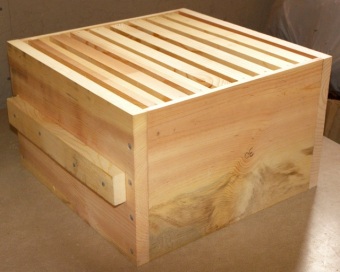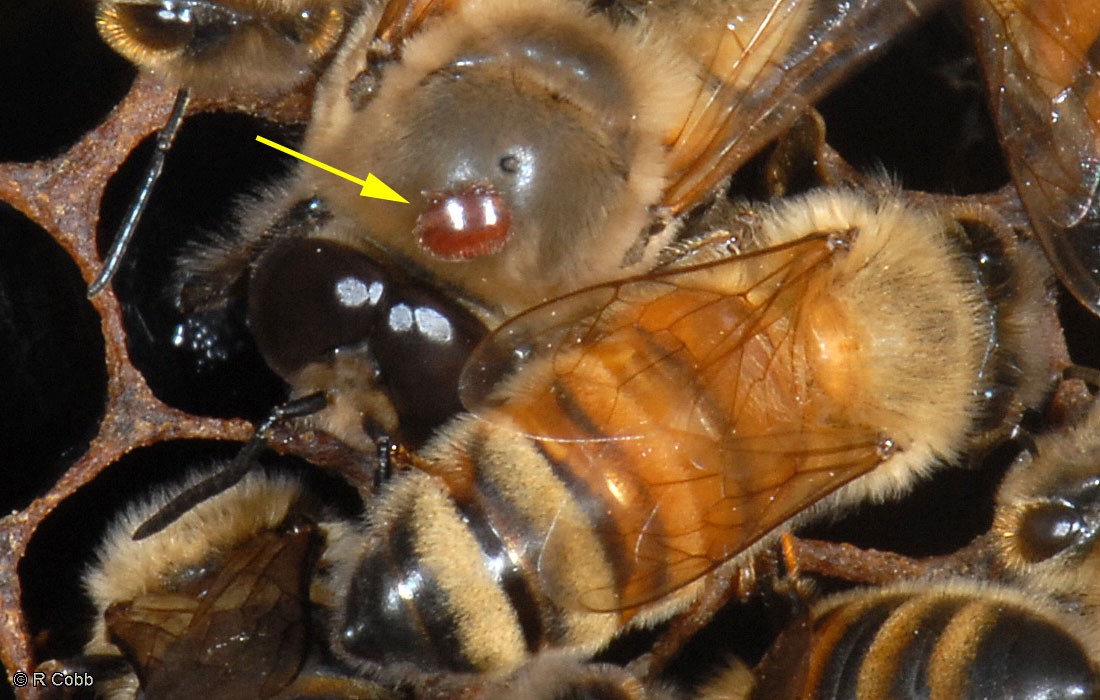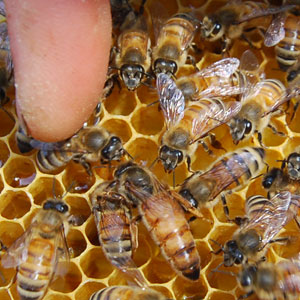 |
| Beekeeping Equipment |
There is some basic equipment that will be needed for a beekeeper to operate a yard effectively. The initial costs aren't cheap, it will probably take a few hundred dollars to get fully equipped. However, there is always the chance of finding a local beekeeper that has extra or used equipment that would be willing to help someone just starting up. Also, finding an experienced beekeeper to be a mentor, or even just asking to talk to one for a few hours can be one of the best ways to avoid some of the mistakes that can hinder the progress of a new beekeeper. It can be invaluable to learn to use equipment or handle bees from a more experienced beekeeper.
Some of the basic beekeeping equipment that someone just starting up will need includes a suit, gloves, hive boxes and frames, hive tools, Queen excluders, bee brushes, and possibly a smoker. It wouldn't go amiss to have a few basic medications for different diseases and pests that bees deal with as well. We'll go over some of the equipment in more detail below.
 |
| Bee Suit |
Bee Suit -- Your suit is the first (and only) line of defense against honeybees. While honeybees are generally very gentle critters, when they feel that they or their hive is threatened, they quickly turn from docile workers to aggressive attackers. While working with the hives and checking on the progress of your bees, you will disturb them as you check the frames for brood, honey or signs of disease. Some of the bees will likely become aggressive at the time, which is normal.
There are beekeepers who feel comfortable without the full suit, just using the veil (headpiece.) I myself after working with bees for several years prefer to keep the entire suit on. However, if nothing else, always wear a veil!! A stinger in certain places in the head (and yes, I've seen some interesting places get stung) can cause severe medical problems. Now, most suits come as a one-piece zip-up uniform with the veil attaching via zipper to the shoulders of the suit. A bee suit will run you anywhere from $60 to $150 dollars. It might be beneficial to spend a few extra dollars for a quality suit that will last for a while. I would also suggest wearing high-top boots, as there is a possibility of bees crawling up the legs if you wear tennis shoes, and that is a bit of an uncomfortable sensation.
Gloves -- In my personal opinion, there is no part of your body that is more necessary to protect than your hands and your head. But as a beekeeper, you will be inserting your hands into beehives, handling frames covered in honey bees, and uncovered hands (as I have found from previous and slightly painful experience) are a wonderful target for a bees stinger. A good pair of leather gloves is as important as a veil in keeping bees out. Gloves are generally included if you purchase a full bee suit.
 |
| Hive Box and Frames |
Hive Boxes -- This is the body of the hive that will house your bees, and it is important that they are relatively important that they are free from damage that will allow the weather or other critters into the center of your hives. Hive boxes hold the frames that the bees store honey in and where the Queen bee lays her eggs. They are designed to stack easily upon each other. As a beekeeper, you will always want extra hive boxes on hand. As frames fill up with brood, honey or pollen, you will need to give the bees additional space by adding a box of frames to the top of the hive(s).
Frames -- The inside of a hive is the nerve center for the hive, and all important activities and possessions take place or are stored in the frames of the hive. Eggs are laid, pupae are nourished, and new bees come out of the intricate honeycomb laboriously built by worker bees. Honey is produced, pollen is stored, and the frames in a beehive have been carefully crafted to replicate a natural hive. All activity in a hive centers around the ability to raise more bees and produce a honey crop that will sustain the hive through the winter, and all of this takes place on the frames of a beehive. The frames are carefully measured with a "
bee space" to ensure that the frames remain movable.
 |
| Hive Tools |
Hive Tool -- This is going to be something that you won't want to live without as a beekeeper. My dad and I keep 4 with us, and it would be very difficult to function without at least one. A hive tool is specially designed to aid a beekeeper in the separating of boxes and removal of frames. They are also useful for scraping. Bees have a knack for sealing things together that a beekeepers generally like to have easy access to. Frames and boxes, for example. Now, there are a variety of hive tools out there, each designed for a specific purpose in mind. There's no need to get fancy right off the bat. You can find a good basic hive tool for $5, and to be honest, that's all you'll really need.
 |
| Queen Excluders |
Queen Excluders -- These are very important pieces of metal or plastic that will allow you to maintain control of what happens where in the hive. The Queen Bee can lay up to 2,000 eggs a day during the spring build-up, and the eggs can be laid anywhere that the queen has access to. Now, a beekeeper will not want the queen bee to be laying her eggs in the honey crop, and a queen excluder will ensure that the queen will stay in the proper boxes. A queen bee is slightly larger than her worker compatriots, and the excluder is designed to allow the worker bees to pass freely between the boxes, but not the queen. Most beekeepers keep the queen bee in the lower two boxes, which allows the queen enough room to lay enough eggs for the hive, while ensuring space for extra honey crop. Now, you can get queen excluders made out of metal and plastic. I've tried both, and found that they work equally well, and the plastic ones are cheaper.
 |
| Bee Brush |
Bee Brush -- There is one problem that beekeepers encounter as they are working with a hive, and it's not pleasant, but it happens. Bees are quite small, and as you are taking frames in and out to check for brood and honey, or moving boxes, you will occasionally and accidentally squish a bee. It makes a crunching sound that makes you cringe. I tell you this just so you can be aware and try to minimize any losses by being forewarned. The best thing that can help prevent unnecessary loss of your workers is a good bee brush. It is worth it to get a good brush made specifically for bees, as any other brushes are not so soft on the bees. And a bee brush is relatively cheap. The bristles are specially designed to be gentle with the bees, as they are quite fragile creatures. While you are inspecting frames and handling boxes, the brushes are used to clear bees from an area. It helps you take a look at a specific area, or allows you to clear an area from bees so that they don't get squished.
Smoker - Probably one of the best known beekeeping tools, a smoker is designed for the purpose of keeping the bees calm. When bees get disturbed, such as when you move boxes and frames, they release pheromones warning other bees of danger. This excites the bees, and makes them more likely to use their stingers. By putting a cloud of smoke in the beehive, the danger pheromones aren't nearly as likely to be detected through the smoke, keeping the bees calmer.
At least, that's the theory. I haven't used my smoker in a couple of years, I haven't found it to be worth the trouble, or to keep the bees much calmer. That being said, you may want to try it out for yourself.
Now, there are other pieces of equipment that you will eventually need or want as a beekeeper, but for getting started, these tools will be just fine. So once again, it will take perhaps a couple of hundred dollars to get started, but if you get good solid equipment, it will last you for years. And putting the money into equipment and the time into gaining knowledge about beekeeping will hopefully save you some of the pains of an inexperienced beekeeper, and make for a bumper crop come extraction time!
 |
| Honey! |





















